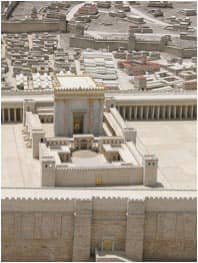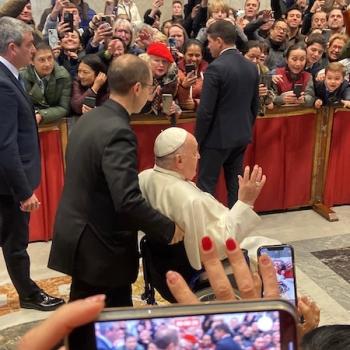By Talia Davis
 If you remember where we left off, we had just assembled the pieces for the Mishkan (the Tabernacle) and Moshe put it all together. This week we are reading about the laws of korbanot, the animal and meal offerings.
If you remember where we left off, we had just assembled the pieces for the Mishkan (the Tabernacle) and Moshe put it all together. This week we are reading about the laws of korbanot, the animal and meal offerings.
In our G-dcast video below, you will hear that the word korban comes from the word karov, which means close. In the Hebrew language, words are all related based on their shoresh or root. When two words are related, we generally assume they have something to do with each other, even though that might seem pretty farfetched. Really, how can you connect sacrifice and closeness? Perhaps because one was trying to bring you the other; the sacrifices were designed to bring us closer to G-d and each other.
 We really are on a detailed kick right now in the Torah, and this portion provides some serious and nitpicky details about how, where, what, and when to sacrifice. I know in modern thought we get really uncomfortable talking about sacrifices, and it conjures up visions of child sacrifice or wasted animals, killed just for the sacrifice, but really it was all about having a big BBQ. It was G-d inviting us into G-d's dwelling for a meal. We cooked up our best animals and left some for G-d. And there were other options too. You could bring a grain offering if you couldn't afford animals. A giant potluck with G-d. But back to the details...
We really are on a detailed kick right now in the Torah, and this portion provides some serious and nitpicky details about how, where, what, and when to sacrifice. I know in modern thought we get really uncomfortable talking about sacrifices, and it conjures up visions of child sacrifice or wasted animals, killed just for the sacrifice, but really it was all about having a big BBQ. It was G-d inviting us into G-d's dwelling for a meal. We cooked up our best animals and left some for G-d. And there were other options too. You could bring a grain offering if you couldn't afford animals. A giant potluck with G-d. But back to the details...
- The Olah (ascending or burnt offering) that was totally burnt by the priest on top of the altar.
- These could be bulls, rams, turtledoves, or pigeons.
- The Minchah (meal offerings), of which the priest would take a piece, burn it on the altar, and the priests would eat the rest.
- This was the best flour mixed with oil.
- It couldn't have leavening (rise) or honey and had to be flavored with salt.
- If you didn't have flour to give, you could bring the first ear of corn that grew and it would be baked on the fire.
- The Shelamim (peace or well-being offering), which was an animal offering where the person bringing the offering ate the meat, and the blood and entrails (things that we don't eat) were burned on the altar.
 The Chatat (sin offering) was an offering brought for unwitting sins of the High Priest, the entire community, the king, or any Jew in the neighborhood.
The Chatat (sin offering) was an offering brought for unwitting sins of the High Priest, the entire community, the king, or any Jew in the neighborhood.
- This one is complicated. If the High Priest or community committed the sin, they had to sacrifice a bull.
- Its blood would be sprinkled in the Tent of Meeting, the fat and entrails would be burned on the altar, and the rest of the bull would be burned on the ash heap outside of camp.
- If a king or leader committed the sin, he was required to sacrifice a male goat.
- Some blood would be put on the altar and the fat would be burned.
- Lastly, if the unwitting sinner was a lay person, the sacrifice was to be a female goat.
- Some blood would be put on the altar and the fat would be burned.
- Wait... so what is an unwitting sin?! Easy - if you touched something unclean, if you touched something human unclean, if you were able to testify in court case but didn't, or if you made an oath and forgot to fulfill it.
- Interestingly, there were options based on income. If the "sinner" couldn't afford the goat, then a sheep, then two turtledoves, then two pigeons... and if you really can't afford any of this, your best flour and oil. It seems like it isn't to punish but rather to remind, doesn't it?
- This one is complicated. If the High Priest or community committed the sin, they had to sacrifice a bull.
- The last one was the Asham (guilt offering) for those who were unsure if they had transgressed or had "betrayed G-d" by trying to defraud a fellow man by swearing falsely.
- In this case, the person had to sacrifice a ram and make restitution (usually 20% to the priests).




